The COVID-19 pandemic resulted in a sudden digital revolution in the 360-degree view of our lives. This exceptional digital leap is due to the widespread use of the internet nowadays. Thus, protecting data, networks, programmes, and other information against unwanted access and destruction is a challenge. Cyber security attacks result from this. Therefore, the 12 types of Cyber Security Attacks of which you should be aware in 2023 are described here along with the prevention measures.
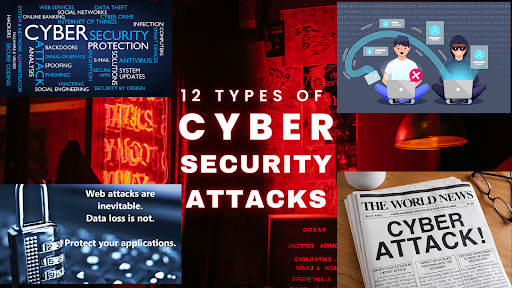
Understanding Cyber Security Attacks
Cyber Security Attacks attempt to gain unauthorized access to computer systems to steal, expose, change, disable, or destroy information. Similarly, cyberattacks also link to cyberwarfare or cyberterrorism, such as hacktivists, coupled with cybercrime. Subsequently, there are many reasons behind cybercrime such as below:
Criminal
Attackers with criminal intent aim to profit financially through data theft, money theft, or company interruption.
Political
For this reason, attackers with socio-political motives try to draw attention to their issues. They consequently publicize their attacks, a practice known as hacktivism.
Personal
Similarly to this, those who are personally motivated, like unhappy current or former workers, will steal money, data, or even just the chance to interfere with a business’s system. However, they mainly aim to exact revenge.
Other reasons for cyberattacks include intellectual challenge, blackmail, and spying (to obtain an unfair advantage over rivals).
Classification of the types of cyber security attacks
Internet-based cyber security attacks
These are website or web application attacks.
System-based cyber security attacks
These attacks aim to hack a computer or a networking computer.
Various types of Cyber Security Attacks
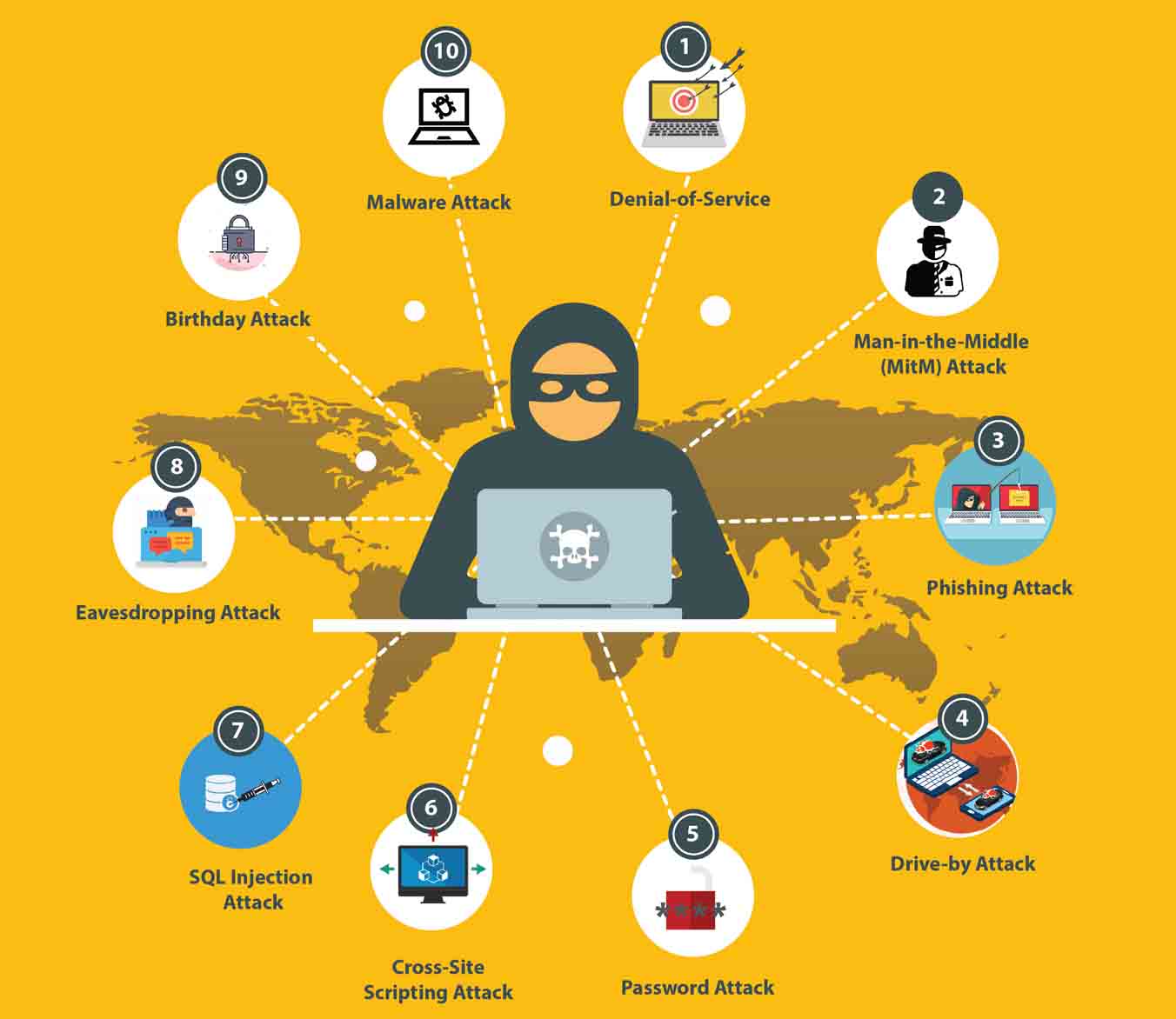
Cyber security attacks come in a wide variety and are widespread today. Knowing the different forms of cyberattacks makes it simpler for us to guard our systems and networks against them. Here, we’ll take a closer look at the top twelve cyber-attacks, depending on their size, which can either harm an individual or a major corporation.
Despite how terrifying it may sound, many prevalent security risks may be spotted and prevented. In this post, we’ll examine the various types of cyberattacks that people currently face, as well as prevent them.
1. Malware Cyber Security Attack:
- The most prevalent sort of security problem is malware. It has existed since the internet’s beginnings and is still a concern.
- The term “malware” refers to undesirable software or software that infects a target computer and starts acting abnormally.
- This includes restricting access, wiping out files, stealing data, and corrupting other systems.
Prevention from a Malware attack
- It is the best form of protection, thus being vigilant is necessary.
- Users and organizations should, at the very least, have the most recent anti-malware software installed, according to common sense.
- Furthermore, using them to distribute malware, suspicious files, URLs, or websites should be recognised.
- Antivirus software and knowledge can often thwart the majority of malware attacks.
2. Phishing Cyber Security Attack:
- An older attacking technique that depends on social engineering is phishing attacks.
- Typically, a message or email asking for private information like a password is sent to an end user.
- The phishing message may occasionally use official-looking media and addresses to appear official.
- An individual persuades by this to click links and unintentionally reveal valuable information
Prevention from a Phishing Attack:
- Generally speaking, the best form of security prevention is common sense.
- Spelling and punctuation problems are frequent in phishing communications.
- This is a clear indication that there is malicious intent because official emails from businesses never ask for personal information.
3. Password Cyber Security Attack:
- ‘Hacked ! ” a typical result comes when your password has been changed and your account information has been lost after logging in.
- The truth is that your password was either stolen or guessed by an unwelcome outsider. The outsider then used it to commit fraud.
- For an organization, that might lose important data, it’s even worse. In this attack, a hacker uses software and password-cracking tools like Cain, Abel, John the Ripper, Hashcat, etc. to interpret your password.
- Password attacks can take many different forms, including dictionary attacks, brute force attacks, and keylogger attacks.
Prevention from a Password Attack:
- Forgetting a password can happen for a variety of reasons. Hackers may attempt to figure out the password or apply “brute force” algorithms to make countless attempts.
- They might also take it from a dangerous place or use media manipulation to get someone to give it to them. Given that it requires a second device to complete the login, two-factor authentication is a strong security measure.
- Make your passwords strong, and alphanumeric with special characters.
- Avoid using the same password across several accounts or websites.
- Update your passwords to reduce the risk of a password attack.
- Keep any password suggestions hidden from the public view.
4. Man-in-the-Middle Cyber Security Attack:
- When a third party assembles a session between a client and a host, it is known as a “Man in Middle” attack.
- The hacker typically hides behind a fake IP address, disconnects the client, and then asks the customer for details.
- A MITM attack could, for instance, take control of a user’s bank account information if they attempted to log into a bank session.
- In this attack, the attacker hijacks a client and host session by interrupting two-party communication. Hackers can steal and change data in this manner.
- The client-server communication has been disabled, as seen here, and the communication channel now passes through the hacker.
Prevention from a Man-in-the-Middle Attack :
- Clearly, pay attention to the website’s security while you use it. Apply encryption on your gadgets.
- Avoid accessing open WiFi networks.
- HTML5 use and protection are advised. Surely, pay attention to the website’s security while you use it. Apply encryption on your gadgets.
- Avoid accessing open WiFi networks.
- HTML5 use and protection are advised.
5. Injection Cyber Security Attack:
- A special code segment introduces into a website search field, the information later manipulates to generate the desired result.
- for instance, SQL injection and log injection. Injections of XML, code, etc.
- Most injection attacks are of the SQL injection variety.
- To interpret and obtain the unauthorized output, a customized SQLi string goes to the web application.
- As a result, the attacker is now able to access, change, and remove databases’ tables. Additionally, this gives attackers access to admin rights.
Prevention from a SQL injection Attack:
Utilize a system that detects intrusions as they identify unwanted network access.
Prevention from an SQLi injection Cyber Security Attack:
Validate the information that the user has provided. By using a validation procedure, it controls user input.
6. Distributed Denial-of-Service Cyber Security Attack(DDOS)
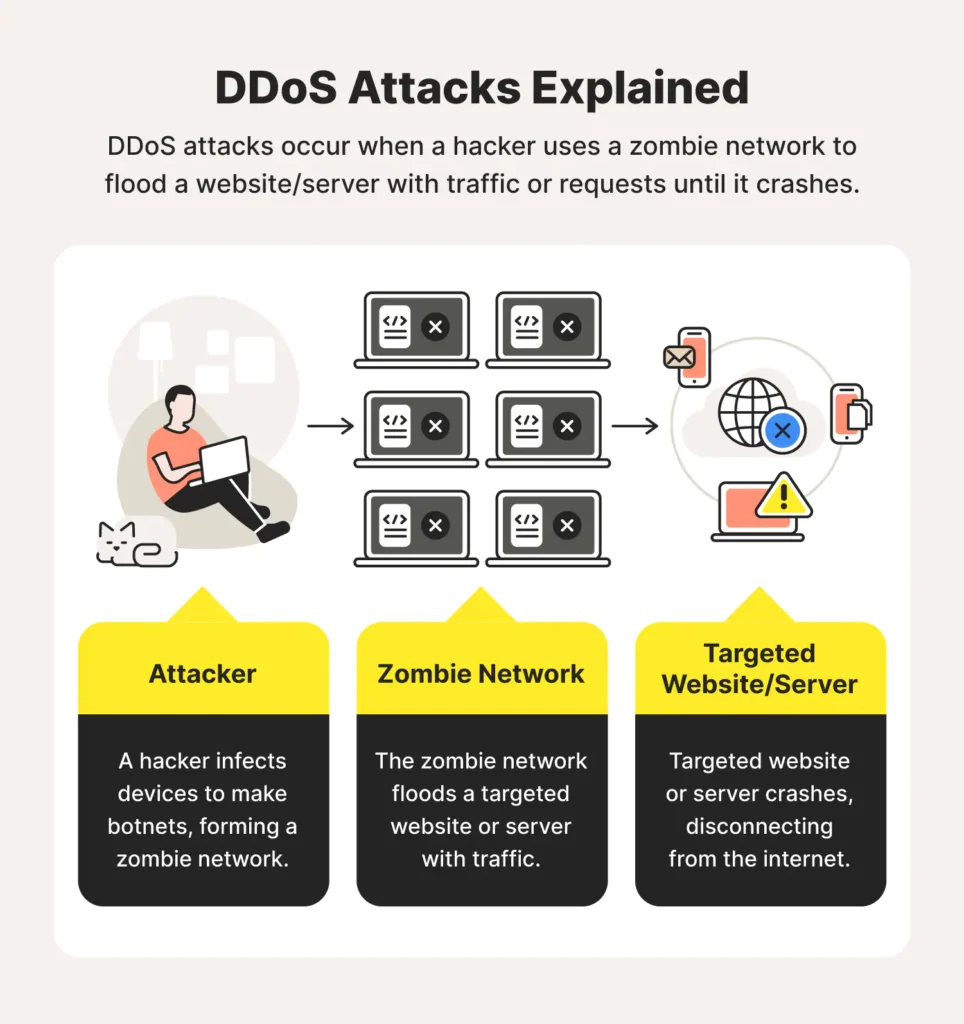
- A Denial-of-Service Attack presents a serious threat to organisations. Attackers target systems, servers, or networks in this situation and attack them with traffic to reduce their capacity and resources.
- When this occurs, the servers get overcrowded with delivering incoming requests, which causes the website to either go down or slow down. The valid service requests go neglected as a result.
- When attackers combine several hacked systems to perform this attack, it is sometimes called a DDoS (Distributed Denial-of-Service) attack.
- Attackers using this technique target networks and load them with online traffic. Therefore, the website that a server hosts shut down or perform poorly. Hence, it becomes useless when it cannot handle user requests.
- Attackers using this technique target networks and load them with online traffic. The website that a server hosts shut down or perform poorly. Hence, it becomes useless when it cannot handle user requests.
Prevention from a DDoS Attack:
- Scan the traffic to find malicious traffic.
- Identify the warning signs, such as network slowness and frequent website interruptions. In such circumstances, the organization needs to act right away.
- For one thing, make sure your team and data centre are prepared to manage a DDoS attack by creating an emergency response strategy, keeping a checklist, and more.
- Finding illegal traffic and blocking access is necessary for stopping a DDoS. Depending on how many rogue IPs are used to spread the assault, this could take some time. For maintenance, servers must typically be taken offline.
7. Insider Threat Cyber Security Attack:
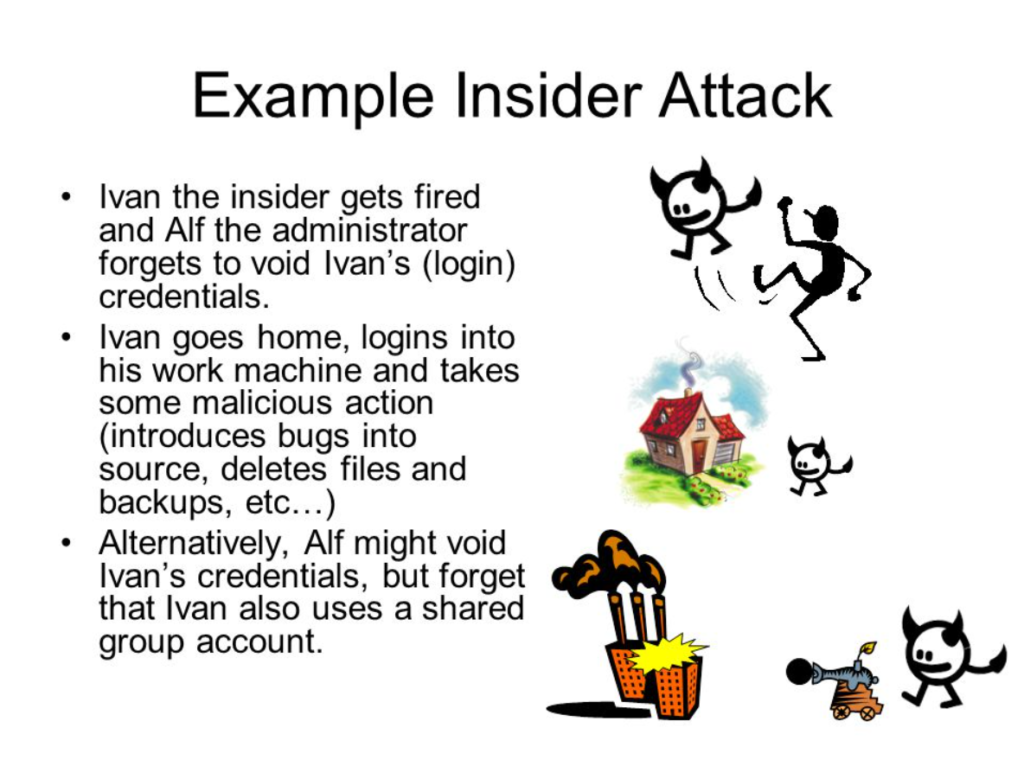
- An internal danger, as the name implies, involves an insider rather than a third party.
- In this situation, it can be someone who works for the company and is well-versed in its operations.
- The potential damage from insider threats is enormous.
- Small organisations are particularly vulnerable to insider threats because their employees frequently have access to sensitive data.
- There are several causes for this kind of attack, including greed, malice, and even negligence. Insider threats are tricky because they are difficult to predict. There are three types of insider threats which include, a Malicious insider, a Careless insider and a mole.

Prevention from the insider threat Attack:
- A strong security awareness culture should exist within organisations.
- Depending on their employment functions, companies must restrict staff access to IT resources.
- Employers must train their staff to recognise insider risks. Employees will be better able to recognise whether a hacker has tampered with or is attempting to misuse the organization’s data as a result.
8. Crypto-jacking Cyber Security Attack:
- Cybercriminals can steal a user’s computer or other device and use it to mine cryptocurrencies like Bitcoin. This practice is crypto-jacking.
- Fewer people know about crypto-jacking than other attack vectors, so discounting it is wrong. When it comes to this kind of assault, organisations don’t have excellent visibility, thus a hacker can be using priceless network resources to mine a cryptocurrency without the organisation being aware of it.
- Of course, stealing valuable data is much more hazardous than taking resources from a commercial network.
Prevention from Crypto-jacking Attack:
- Monitoring the CPU consumption of all network devices, including any cloud-based infrastructure you utilise, is necessary to defend your network from Crypto-jacking.
- Additionally, it’s a good idea to teach your staff to be alert for any performance difficulties or suspicious communications. Furthermore, it might be infected with the crypto-jacking virus.
9. Zero-Day Exploit Cyber Security Attack:
- To start with, a zero-day exploit occurs when cybercriminals identify a vulnerability in popular software programmes and operating systems.
- It targets the companies that use those programmes, and use the weakness to their advantage before a remedy is made available.
- Accordingly, after a network vulnerability is disclosed, a Zero-Day Exploit occurs; in most circumstances, there is no fix for the issue.
- As a result, the vendor alerts consumers to the vulnerability; nevertheless, the info also reaches the attackers.
- in addition to, the vendor or developer may need any amount of time to address the problem, depending on the severity of the vulnerability.
- In the meanwhile, the exposed vulnerability is the focus of the attackers. They make sure to take advantage of the vulnerability even before a patch or other fix is put in place.
Prevention from Zero-day exploits Attack:
- Since zero-day threats are still unknown, traditional antivirus solutions are ineffective against them.
- As a result, there is no method to completely shield against such attacks.
- Next-Generation Antivirus (NGAV) solutions, on the other hand, can aid in preventing attackers from downloading unknown software and installing it on a victim’s machine.
- Naturally, updating all software will aid in removing vulnerabilities, and having a tried-and-true incident response plan in place will aid in speedy recovery in the event of an infection.
10. DNS Tunnelling Cyber Security Attack:
- Since a sophisticated attack method called DNS tunnelling is made to offer attackers enduring access to a specific target.
- Attackers can “tunnel” or introduce malware into DNS queries since many companies do not keep an eye on DNS traffic for harmful behaviour (DNS requests sent from the client to the server).
- Nevertheless, most firewalls are unable to identify the persistent communication channel that the malware is utilised to construct.
- In a case, to prevent a watering hole attack, it is advised to conceal your online activities. For this, use a VPN and also make use of your browser’s private browsing feature.
- Likewise, a VPN delivers a secure connection to another network over the Internet. It acts as a shield for your browsing activity. NordVPN is a good example of a VPN.
Prevention from DNS Tunnelling Attack:
- For that reason, you will probably need to spend money on specialised solutions like TunnelGuard, Zscaler, and DNSFilter because conventional firewalls and antivirus software cannot detect DNS tunnelling.
- Equally important, is to make sure the solutions you employ can automatically prevent malware contained in malicious DNS queries from being executed.
- Additionally, it should enable real-time analysis of all DNS queries to look for suspicious trends and ban locations that are known to be used for data exfiltration.
11. Business Email Compromise (BEC) Cyber Security Attack:
- In a Business Email Compromise attack, the attacker targets specific people, typically an employee with the authority to approve financial transactions. Hence, uses deception to persuade them to transfer funds to an account under the attacker’s control.
- For BEC attacks to be successful, planning and study are typically required. For instance, the attacker can persuade the employee to give over the money by providing any information about the target organization’s executives, workers, customers, business partners, or potential business partners.
- Therefore, one of the types of cyberattacks that can cause the most financial harm is BEC attacks.
Prevention from Business Email Compromise (BEC) Attack:
- Attack Due to Business Email Compromise (BEC) Attack Due to Business Email Compromise (BEC) Attack Due to Business Email Compromise (BEC) Security awareness training is the most effective strategy to stop BEC.
- Simultaneously, it is with other phishing assaults.
- Also, the employees need to be taught to be on the lookout for emails with a phoney domain, emails that pretend to be from a vendor, emails that seem urgent, and anything else that seems fishy.
12. Cross-site Scripting (XSS) Cyber Security Attack:
- Cross-site scripting attacks are very related to SQL injection attacks.
- However, instead of stealing information from a database, they usually target other users who visit the website and attack them.
- Although, the comments area of a website would be a straightforward illustration. An attacker could post a malicious script into the page if the user input isn’t validated before the post is published. When a user accesses this page, the script will run and may infect their computer, steal information, or even retrieve their login information.
- Instead, they can just send the consumer to an unauthorised website.
Prevention from Cross-site Scripting (XSS) Attack:
- A fundamental familiarity with web development principles and tools, such as HTML and JavaScript.
- Obviously, it is necessary to understand the complex topic of cross-site scripting.
- However, in plain English, the methods used to stop XSS attacks are comparable to those that stop SQL injection assaults.
- Anyhow, you must make sure that every input is correctly sanitised to prevent attackers from injecting harmful scripts into websites.
- Most importantly, you must take care to prevent your website from rendering any special characters that visitors enter.
Ways to Prevent Cyber Security Attacks
Keep Strong passwords to keep protection from cyber security attacks
- For several accounts, use several user IDs and password combinations.
- Apart from this, refrain from noting passwords down. Differing from this, increase the complexity of the passwords by combining letters, numbers, and special characters; the total must be at least 10 characters.
- As was previously stated, update your password frequently
Protect your PC
- Firstly, the activation of a firewall is very important
- The first line of defence in a network is a firewall, which prevents unauthorised access or fraudulent websites as well as a few viruses and hackers.
- Furthermore, the application of malware or anti-virus software
- Primarily, install and use antivirus software to protect your computer from attacks.
- Apart from this, always avoid spyware attempts
- In sum by setting up and maintaining anti-spyware software, you can stop spyware from corrupting your computer.
Understand social media
- Keep your social media profile details private on sites like Facebook, Twitter, YouTube, MSN, and others to prevent cyber security attacks.
- As a final point, be mindful while sharing and posting any information online. Last but not the least, if you store any data online, it is stored permanently!
Update your operating system at regular intervals
- Specifically, apply the most recent system versions to keep your programmes and operating system (such as Windows, Mac, or Linux) up to date.
- To secure outdated software from future dangers, and enable automatic improvements.
Keep your mobile devices secure
- Incidentally, stay alert that viruses and hackers can attack your smartphone.
- On the other hand, always download software from trusted websites. Keep your mobile devices secure.
Data Protection is important
- In short, make regular backups of all your essential information.
- Secure your most sensitive documents, such as tax records and financial information, and store them somewhere else.
Wireless network security
- Wireless networks at home are incursion if they aren’t properly secured.
- Always check default settings and make changes.
- Avoid doing any financial or business transactions over public WiFi and hotspots because they are both insecure.
- Last but not the least, always download software from trusted websites. Keep your mobile devices secure.

Apart from this, when filling out any online application, you must be extremely cautious when submitting information such as your age, residence, date of birth, PAN card number, and financial information.
In sum, don’t forget to change your privacy settings even on secure websites
Cyber Security Courses
Finally, after learning a lot of things about cyber attacks and how to defend against them, there is also a need for cybersecurity skills and knowledge. To illustrate, many well-known institutions, including Tech Marshal Academy, Henry Harvin Education, Jigsaw Academy and others offer some of the top online courses in cyber security. Accordingly, numerous career prospects are available after the training, such as security architects, cybersecurity engineers, chief information security officers, malware analysts, etc.
Furthermore, the Best Cyber Security Course is provided by Henry Harvin as it aspires to focus on providing value. In other words, it aims to help trainees develop their skills so they can become more successful in their career journey.
Certified Cyber Security Course by Henry Harvin

Ratings:
9.8 out of 10
Course Duration:
16 months of interactive live sessions
Mode of teaching:
Online
To begin with, the advantages of Cyber security courses from Henry Harvin:
- 16-Hours Live Two-Way Interactive Online Classroom Training
- Prestigious Cybersecurity Professional Certification
- Updated Study Resources
- Videos of the past Session
- Several Sessions with Different Trainers
- Henry Harvin® Cyber Security Academy 1-Year Gold Membership
- For a year, monthly boot camps for refresher training
- Utilization of the learning management system (LMS)
Above all, the awards received by Henry Harvin® Education include:
- the under 40 Business World Award
- Top Corporate Training Award,
- Game-Based Learning Company of the Year,
- membership in the American Association of EFL, Ministry of Corporate Affairs, MSME, and other organisations.
Reviews:
No doubt, 200+ 4.5+ star testimonials on Youtube and 1400+ 4.5+ star reviews on Google.
Henry Harvin® Trainers:
- Industry experts with more than 23 years of experience and international certification
- Vast Teaching Experience with Expertise in the Topics and the Tools
- Having instructed 897+ People Worldwide
- Certainly, the choice to attend multiple sessions with different trainers is up to the candidates.
Alumni Background:
Alternatively, join the 18,000+ strong global alumni community by enrolling in the prestigious Cyber Security Academy of Henry Harvin®.
Cyber Security Course Curriculum
- Security essentials
- Cryptography
- Computer network and security
- Application security
- Data and endpoint security
- IdAM( Identity & Access Management )
- Cloud Security
- Phases of cyber security attacks
- Security processes in practice for businesses.
Skills Included:
- Operation Management for IT
- Phases of Cyber Security Attacks
- Cloud Safety
- Identification and Access Control
- Security for Data & Endpoints
Who can apply:
Either way, any IT background would be preferred, however, it is not mandatory.
Affiliations and Recognitions:
- Evidently, affiliated with the American Association of EFL, the Ministry of Corporate Affairs, MSME, and the under 40 Business World Award
- Of course, winner of the Top Corporate Training Award, Game-Based Learning Company of the Year
- What’s more, Project Management Institute (PMI), UKAF, UKCert, and ISO 29990:2010 certifications.
Placement:
Additionally, support for 10+ Weekly Jobs Assistance provided by the leading companies in the cyber security industry
Certifications include:
- What’s more, you receive a Hallmark certificate of Certified Cyber Security Professional (CCSP) from Henry Harvin®.
- Moreover, share your achievement via social media platforms like Facebook, Instagram and others to add an advantage to your resume. Let your friends and connections know about your achievement.
Fee:
approximately INR 15000.
Recruiting Partners:
2100+ partners like McAfee, IBM, Accenture, etc.
Salary:
Average Salary: approximately 5.3 lakhs per year on average, ranging from 2.0 lakhs to 17.5 lakhs.
Average Salary Hike: up to 80% to 150%
Contact us/via WhatsApp:
9891953953
Address:
Henry Harvin Asia Pacific Head Office, Henry Harvin House,
B-12 Sector-6 Noida (UP)- 201301
Other courses by Henry Harvin:
- Entry Level Cyber Security Course
- Cyber Security Fundamentals Course
- Master’s in Cyber Security Management
- Data Privacy Course
- Information Systems Security Professional (CISSP) Course
Henry Harvin Other Centers:
Delhi, Hyderabad, Mumbai, Kolkata etc.
Recommended Reads
- Best Books to read about Cyber Security Attacks
- List of best Network Security Certification courses
- Know how to become a Cyber security expert
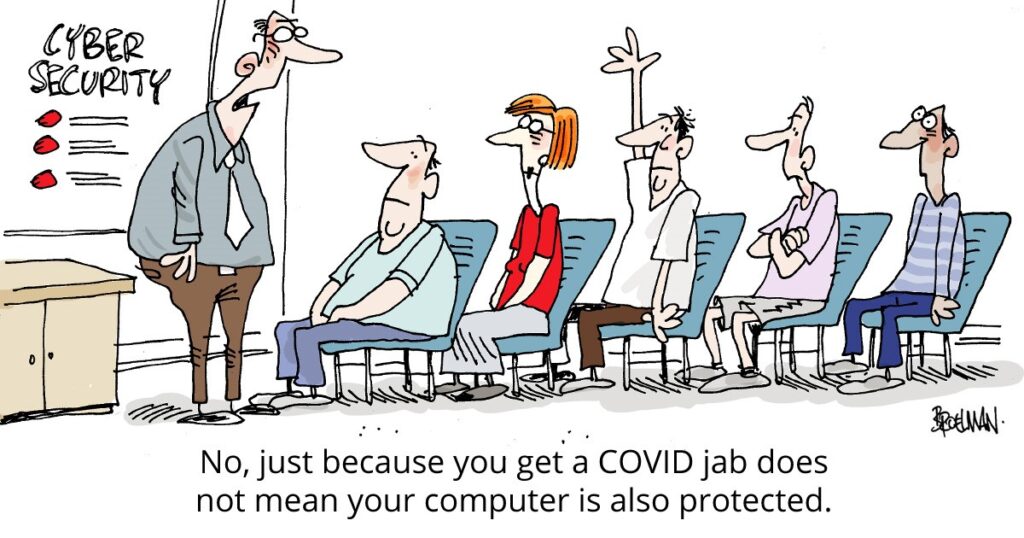
Summing Up:
Now, that we are aware of the different kinds of cyber security attacks, we can protect ourselves. The possibility still exists, nevertheless, that cyber security attack threats could get worse shortly. Even so, the rate of cyber security attacks isn’t about to decrease. However, that doesn’t mean you can’t take precautions against bad guys trying to access your data or hack your gadgets.
To make awareness about cyber security attacks, students from the IT generation need the inspiration to pursue degrees in cyber security. Undoubtedly, they must support businesses as they develop their cyberspace without fear. Indeed, the government of India has already focused its professional IT workforce’s efforts on cybersecurity measures. Unlike, businesses must improve cybersecurity defence systems for India’s future to provide the country with a competitive edge.
FAQs
A1. A malicious attacker can take advantage of a weak spot in software code, which is referred to as a vulnerability. The SaaS (Software as a Service) software industry is where they are most frequently encountered.
A2. Users are required to provide their identification to be authenticated. The user’s identity can be verified using the ID and Key. This is the best technique for the system to grant user authorization.
A3. The abuse of a legitimate computer session is known as TCP session hijacking. The most popular technique for session hijacking is IP spoofing. In this technique, attackers insert a command between two network nodes via IP packets.
A4. Software testing assures that software systems and applications are free from any vulnerabilities, dangers, or risks that could result in significant financial loss is known as security testing.
A5. The Microsoft Baseline Security Analyzer (MBSA), has graphical and command-line access and offers a way to locate outdated software patches and mismatched software.








